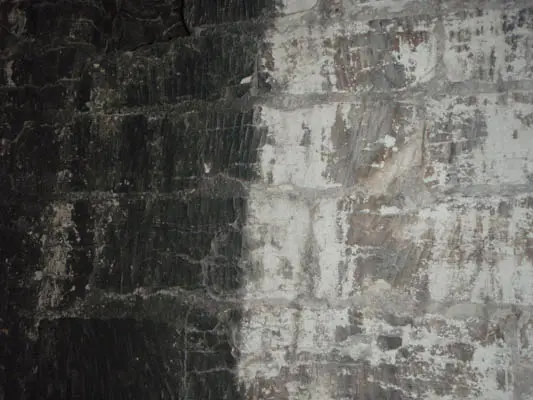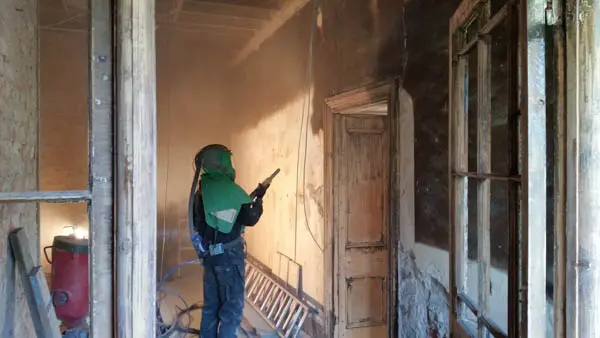Fire Restoration and Soot Cleaning.
Surface Preparation – Nationwide
Fire Damage
A regular requirement in our side of the cleaning business is the removal of soot (and melted plastic etc) from surfaces after a fire.
Greenleaf Contractors specialise in using a sand jetting system that has been used nationwide for property restoration, including working on many Listed Buildings. The system causes minimal damage to an underlying surface and is flexible enough to tackle most property restoration cleaning tasks. The low pressure sand jet can clean surfaces without injecting large quantities of water into the surface, and with minimal surface damage, at the same time, the ‘damp’ system also captures dirt and abrasive, preventing the health and safety risks associated with sandblasting.
A standard ‘go to’ method recommended by many insurance companies is ‘Dry Ice Blasting‘ where particles of dry ice are fired at a surface to dislodge debris, we offer this service as well.
We have also however successfully removed soot from internal surfaces using a traditional, tuned, dry sand blast pot -we have removed soot from stone walls, brick walls, wood and even wall paper.
Our superheated Steam machine also can be effective – and is particularly good at removing melted bitumen (from felt roofs) from brickwork – with minimal effect on the surface.

Sand Jet Cleaning
Particularly good for external cleaning of soot etc, as the damp sand ‘gathers up’ the contaminant and it all sludges to the bottom of the wall (and is then bagged up and taken away), Dry ice and to some extent dry grit blasting remove the contaminant from the surface – but ‘free it’ to blow around – and of course it might settle again on another surface!

Dry Ice Soot Removal
Dry Ice is often recommended / specified for insurance soot removal work. No additional abrasive or water is added to the problem – the dry ice disappears as soon as it has done its job.. But… it is relatively expensive and almost as dusty as traditional grit blasting, the soot is blasted off the surface – then is blown around the room until swept up. The cold nature of the dry ice can also make the soot cold and damp through condensation – so it can stick thoroughly..
In this case we were able to remove the soot from the internal surfaces of a listed church tower near Grimsby – leaving the stone and whitewash underneath the soot intact. The biggest problem with this particular job was hauling the dry ice machine up the tower!
Traditional Dry Sand Blasting
We have found that a traditional dry grit blast machine, tuned down to low pressures and low consumption can very cost effectively remove soot from the inside of properties. It is considerably cheaper than dry ice blasting – and the abrasive doesn’t add significantly to the mess – actually it seems to give the soot something to ‘cling on to’ and makes removing the loosened soot from a room rather easier. In the example on the right I was actually removing soot from wallpaper -from a listed house near goole that had been deliberately set alight by previous tenants – all the surfaces of the large property were liberally covered in soot.

Superheated Steam
Superheated Steam (DOFF) cleaning can be effective in cleaning external soot – and for removing melted bitumen (often a result of melting flat roofs) This example from wakefield in 2025 shows the bitumen marks removed – with minimal effect on bricks or flowerbeds! (and sorry I didn’t quite get my angles right for the before and after photos!)